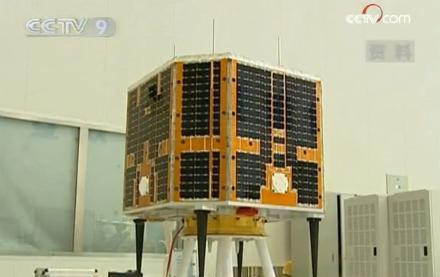27 January 2010—Two weeks after a magnitude 7.3 earthquake devastated Haiti, amateur radio operators are hard at work there connecting rescuers within the country and to the outside world. But they are switching gears from rescue mode to recovery mode as aid workers set up camp and distribute food, water, medical supplies, and other aid to survivors. more
All posts by j0n
First tweet from space.
Spotted on the Southgate Amateur Radio club’s website.
Astronauts aboard the International Space Station received a special software upgrade last week –
personal access to the Internet and the World Wide Web via the ultimate wireless connection.
Expedition 22 Flight Engineer T.J. Creamer, KC5WKI, made first use of the new system on Friday when he posted the first unassisted update to his Twitter account, @Astro_TJ, from the space station.
Amateur Satellite – Thesis
I spotted this on the Southgate Amateur Radio Clubs news feed this morning. Looking forward to learning something by reading it. Pretty cool project though, it has to be said.
A thesis based on the work done for the SO-67 Amateur Satellite is now available here.
Titled “Reusable Software Defined Radio Platform for Micro-satellites” it was written by John Foster Van Wyk of Stellenbosch University and describes the design and implementation of a software platform for the software defined radio (SDR) that formed part of the Sumbandila (SO-67) Amateur Radio satellite.
The Amateur Radio payload on SO-67 operates in conjunction with the Software Defined Receiver project sharing the VHF receiver and UHF transmitter used by the SDR project.
The nominal frequencies for SO-67 are Uplink 145.875 MHz and Downlink 435.345 MHz +/- Doppler shift
Sumbandila (SO-67) Mission Blog
Southern African Amateur Radio Satellite Association (SA AMSAT) and SO-67 schedule
Speeding fines
I travel one of three different routes into work every day. i tend to follow one most of the time that brings me onto the Waterford City outer ring road. Now, given that I’m not exactly the slowest driver on the road, and have been known to do the odd doughnut myself, I’m astonished at the speed many many cars overtake me at. If there was ever a speed trap, they’d be done for (and I would probably get a telling off).
Imagine my surprise over the last few days, with the icy threat of mashing their car off a roundabout or off someone elses vehicle, that I’ve been overtaken by precisely 1 driver in the last 3 or 4 days of driving into work.
So my disturbing conclusion is that the speeding fine and penalty points are of little interest to habitual speeders, and that the fine should be increased substantially (think of the price of replacing a panel or wheel or maybe a front bumper).
Now, what can we do with the folks that just drive too slow and hog the white line?
Zeniths back!
Twelve O’Clock in London
From Met Eireann
Every day at Twelve O’Clock Greenwich Mean Time, a thousand people from around the world synchronise their efforts in one global act, the launching of meteorological weather balloons.
This non-political agreement between all of the world’s governments forms the theme of Nin Brudermann’s art project “Twelve O’Clock in London”. Nin, sponsored by the New York Foundation for the Arts, has gathered 90 videos of balloon launches from around the world to assemble an illustrative short movie highlighting global scientific co-operation.
Midday launch from Valentia Observatory.

Midnight launch from Valentia Observatory.

Hope
Wow, time sure is flying by December 31st already. Let me see, things of note. Cormac is building a Millenium Falcon (very cool). Scott has released his new Weather Station, the ADS-WS1. I finally got my head around ALSA’s dsnoop plugin on Linux, which is very handy when trying to stream and record from the same device.
I’ve spent the last two days pulling as many of my MP3’s off a dying drive as possible while playing with an AOR AR5000 that Santa brought me (good man Santa!).

Hope-1 was launched on 14th December. This is a big deal as it is (to my knowledge) the first Amateur Satellite launched from China.

See you in 2010.
ESA’s Rosetta
Rosetta swung by (literally) earlier to pick up some speed before heading towards Comet 67P/Churyumov-Gerasimenko in 2014. ESA have interesting information on their site here. With some amateur observations visible here. All very cool.
Insulation
31.99 from Woodies, 21.51 from Heiton Buckley. Wow, that’s a big difference.
Electricity Usage.
I’d been meaning for ages to purchase something to measure power consumption in the house. Earlier this week, a work colleague reminded me about it, so I went and purchased one. My Current Cost Envi arrived just before 8am this morning (thanks Mr. Postman) so I hurriedly plugged it all in before going to work.
This evening after dinner I found the data cable and plugged it all in.
[3383512.421973] usb 1-2: new full speed USB device using uhci_hcd and address 3
[3383512.580255] usb 1-2: configuration #1 chosen from 1 choice
[3383513.033716] usbcore: registered new interface driver usbserial
[3383513.034024] drivers/usb/serial/usb-serial.c: USB Serial support registered for generic
[3383513.034271] usbcore: registered new interface driver usbserial_generic
[3383513.034276] drivers/usb/serial/usb-serial.c: USB Serial Driver core
[3383513.146668] drivers/usb/serial/usb-serial.c: USB Serial support registered for pl2303
[3383513.146703] pl2303 1-2:1.0: pl2303 converter detected
[3383513.146930] usb 1-2: pl2303 converter now attached to ttyUSB0
[3383513.146942] usbcore: registered new interface driver pl2303
[3383513.146946] drivers/usb/serial/pl2303.c: Prolific PL2303 USB to serial adaptor driver
Excellent, the device was recognised to begin with. I found this web page by Paul Mutton, describing how to generate graphs from it with RRDtool. Some minor modifications, courtsey of “Q” and we have a result.

To quote from Paul’s page:
Then you can sit back and be amazed at how much electricity you waste when you leave a computer on to monitor how much electricity you are using 🙁
